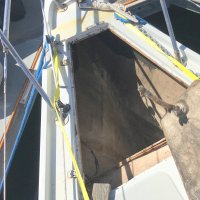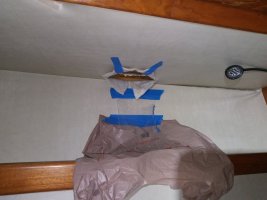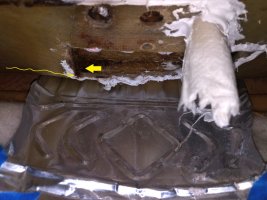Is that a crack filled with caulk on the starboard side of the anchor locker? If so I wonder if it extends under the anchor locker lip and could allow water entry?
Thanks for all the tips Doug. Funny how someone else can glance at a few photos of a boat and find things the owner had missed.
I've been dismissing that "gelcoat crack" since 2016 when I got the boat. Everyone who saw it agreed--gelcoat crack. Seems every few years someone does a post here about a "bow crack" on the deck, always in the same location as mine, which never seems to cause anyone any trouble. Besides, to investigate it further, you have to chip away the gelcoat, which then necessitates a repair.
On further investigation yesterday, it's not a gelcoat crack--it goes all the way through the top layer of fiberglass and into the wood core.

Worse, that's the exact area where water pools around the upper rim of the anchor locker pan before it runs down into the pan and drain. So, there is always a bit of standing water there when it rains. You can see where the water stream flows in this picture.

Well, it's a good new / bad news story. I can likely stop the leak now, but will have a fairly difficult, upside down core repair to do next year after I take the anchor pan out. I'll probably just lay a G-10 strip in there between the aft side of the crack and forward past that stanchion base.
In the mean time, I dug out a channel and drilled a drain hole into the underside of the deck under the crack. I can cover the whole thing with polysulfide after it dries out a bit. At least I can catch any further water that gets in there, collect it in a funnel, and drain it into the anchor locker. Hopefully that gets me through the winter without any more water running along that outside corner of the coring.
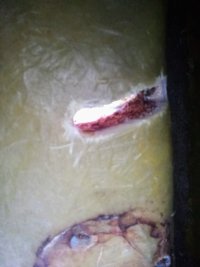
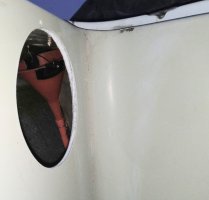
Thanks for the help!



